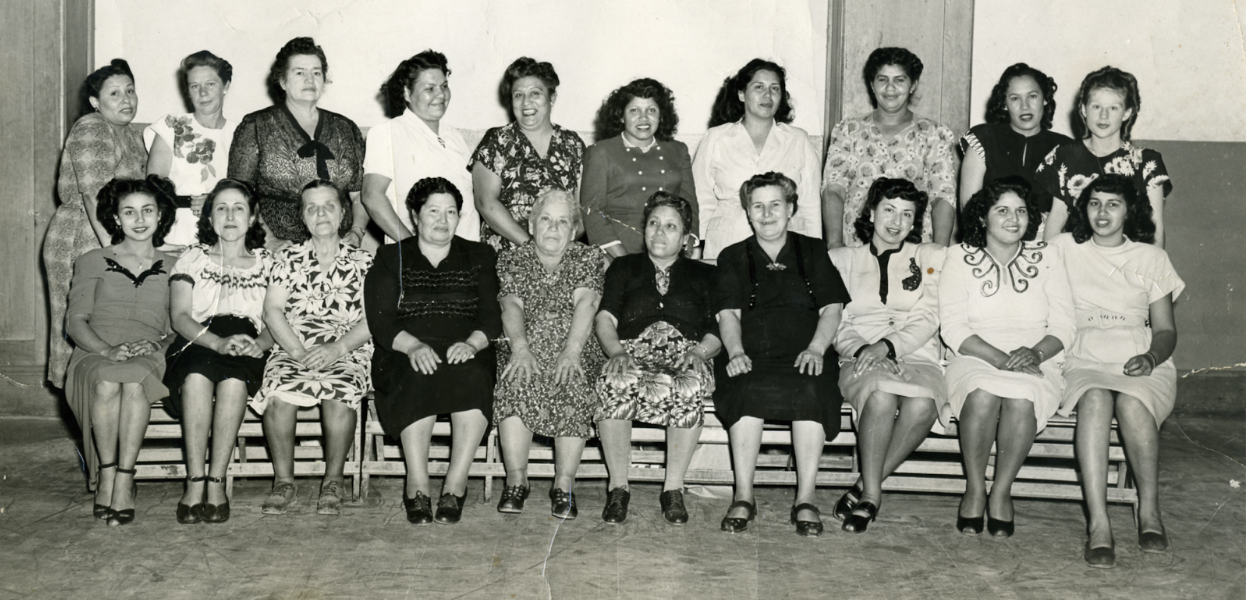Mexican-American Wives of Punjabi Pioneers
The Punjabi men who arrived in Canada and the US in the early twentieth century intended to stay briefly to earn enough capital before returning to Punjab to purchase land. Many were already married. The men stayed in farm camps in central California where they eventually began to settle on a more permanent basis. These men found it difficult to bring their wives from Punjab to the US due to exclusionary legislation barring migration from Asia from 1917 until 1946. South Asians had the lowest proportion of women among all Asian migrant communities: only 100 women per 1,572 men in 1930. The Punjabi men who stayed in North America were largely unable to bring their wives until immigration from India was reinstated in 1946. The majority of the Punjabi husbands were Sikh (about 85 percent) and Muslim (about 10 to 12 percent). Many remained bachelors. Meanwhile, Karen Leonard documents 378 marriages between Punjabi men and women of diverse heritage between 1913 and 1949, primarily from Mexico.

The first Indian Independence Day Celebration in Marysville, CA, January 26, 1948. Back row (left to right): Josephine Romo Subhra, Della Spence Khan, Alejandra Beltran Singh, Inez Wiley Singh, Cruz Perez Singh Ardave, Isabel Sidhu, Cirila Singh Chand, Nand Kaur, Velia Sidhu, and Dorothy Sexton Sahota. Front row (left to right): Socorro Singh, Margarita Singh, Mrs. Mildren Gina Bains, Rosario Virgen Singh Gill, Mariana Singh, Dona Antonia Alverez Singh, Genobeba, Loya Singh, Mary Singh Rai, Amelia Camacho Bidasha, and Nina Singh Shine. Courtesy: David Rai. Women identified in Leonard, Making Ethnic Choices.
This extraordinary photograph shows the diversity in Yuba City’s Punjabi community in the late 1940s. Joining the celebration were women from Mexico and Punjab, as well as US-born women of mixed Punjabi/Mexican heritage and European heritage. Of the hybrid families that Karen Leonard documented, it is important to note that the community was more diverse in Yuba City than in southern California. Punjabi men married women of diverse ancestry: Mexican (50%), white (28%), African-American (10%), Indian (9%), and Native American (2%). By contrast, 4 out of 5 Punjabi men married women of Mexican descent in the Imperial Valley of southern California.
Women of Mexican heritage played a critical role in the development of the Punjabi American community. As Karen Leonard notes, the normative family among early South Asian Americans involved a blending of Punjabi and Mexican heritage. The families negotiated complex differences between the Punjabi and Mexican cultures, gender norms, and religions. The other critical fact is that the majority of Punjabi men who lived in the United States between 1923 and 1946 were prevented from becoming US citizens by law. They were also denied basic civil rights, including the right to own land. Therefore, the Punjabi men pursued two main strategies for accumulating capital during this time. They either formed informal land arrangements with Anglo farmers, or they increasingly put their land in the names of their wives or children who were US citizens. After 1946, when the citizenship of South Asian immigrants was finally restored on a limited basis, Punjabi men finally purchased land in their own names. At first the men often pooled their resources to buy land collectively. Later, Punjabi men often did so individually or together with their wives and/or children.
Source: Karen Isaksen Leonard, Making Ethnic Choices: California’s Punjabi Mexican Americans (Philadelphia: Temple University Press, 1992).
